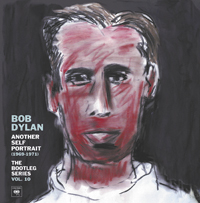 Bob Dylan’s influence on popular music is incalculable. As a songwriter, he pioneered several different schools of pop songwriting, from confessional singer/songwriter to winding, hallucinatory, stream-of-consciousness narratives. As a vocalist, he broke down the notion that a singer must have a conventionally good voice in order to perform, thereby redefining the vocalist’s role in popular music. As a musician, he sparked several genres of pop music, including electrified folk-rock and country-rock. And that just touches on the tip of his achievements.
Bob Dylan’s influence on popular music is incalculable. As a songwriter, he pioneered several different schools of pop songwriting, from confessional singer/songwriter to winding, hallucinatory, stream-of-consciousness narratives. As a vocalist, he broke down the notion that a singer must have a conventionally good voice in order to perform, thereby redefining the vocalist’s role in popular music. As a musician, he sparked several genres of pop music, including electrified folk-rock and country-rock. And that just touches on the tip of his achievements.
Dylan’s force was evident during his height of popularity in the ‘60s — the Beatles’ shift toward introspective songwriting in the mid-’60s never would have happened without him — but his influence echoed throughout several subsequent generations, as many of his songs became popular standards and his best albums became undisputed classics of the rock and roll canon. Dylan’s influence throughout folk music was equally powerful, and he marks a pivotal turning point in its 20th century evolution, signifying when the genre moved away from traditional songs and toward personal songwriting. Even when his sales declined in the ‘80s and ‘90s, Dylan’s presence rarely lagged, and his commercial revival in the 2000s proved his staying power.
For a figure of such substantial influence, Dylan came from humble beginnings. Born in Duluth, Minnesota, Dylan (b. Robert Allen Zimmerman, May 24, 1941) was raised in Hibbing, Minnesota, from the age of six. As a child he learned how to play guitar and harmonica, forming a rock and roll band called the Golden Chords when he was in high school.
Dylan made his way to New York City in January of 1961, immediately making a substantial impression on the folk community of Greenwich Village. Dylan’s debut album (released in March 1962), is a collection of folk and blues standards that boasted only two original songs. Over the course of 1962, Dylan began to write a large batch of original songs, many of which were political protest songs in the vein of his Greenwich contemporaries. These songs were showcased on his second album, The Freewheelin’ Bob Dylan.
By the time The Times They Are A-Changin’ was released in early 1964, Dylan’s songwriting had developed far beyond that of his New York peers. Heavily inspired by poets like Arthur Rimbaud and John Keats, his writing took on a more literate and evocative quality.
Dylan made his breakthrough to the pop audience in the summer of 1965, when Like a Rolling Stone became a number two hit.
Bob Dylan Bootleg Series Volume 10 comes from the 1969-1971 recording sessions that ultimately produced the Self Portrait and New Morning albums. All 35 tracks are previously unreleased, alternate takes, demos or live versions of that material. The versions of the songs on this package are radically different from the officially released versions. The cover is new artwork by Bob Dylan. The liner notes have been written by Greil Marcus, who wrote the original Self Portrait review for Rolling Stone that infamously asked, “What is this sh**?” Also included is an extensive essay from well known journalist, Michael Simmons. The set also has extensive photographs of that era from John Cohen and Al Clayton, many of them rare and unseen – as well as pictures of the original tape boxes and cue sheets.
by Stephen Thomas Erlewine
{jcomments on}

